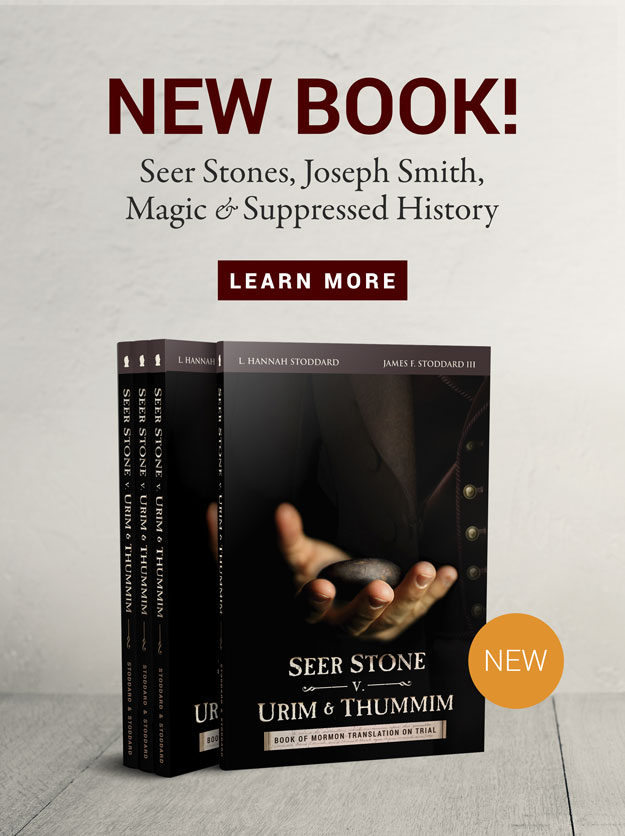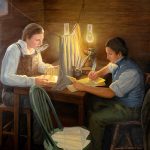Associated Locations:
- Abbeville, South Carolina, U.S.
Associated Dates:
- March 18, 1782 – Born
John C. Calhoun is one of the eminent spirits who appeared to President Wilford Woodruff in the St. George Temple on August 21, 1877. This interesting story is detailed in the Eminent Spirits Appear to Wilford Woodruff wiki.
John C. Calhoun is considered to be the third member of what has been referred to as the “triumvirate” of his day. In Roman times the triumvirate was the union of three men who obtained power and jointly ruled Rome. The first of these were Caesar, Crassus, and Pompey. The three that ruled Congress in the 1800’s were Daniel Webster, Henry Clay, and John C. Calhoun.
“The union –next to our liberty, the most dear.”
– John C. Calhoun
Life Sketch from The Other Eminent Men of Wilford Woodruff
Copyright © Taken from the book: The Other Eminent Men of Wilford Woodruff. Special thanks to Vicki Jo Anderson. Please do not copy.
American Statesman 1782-1850
Early Life
Calhoun, like so many of the early leaders of this country, was of Scotch-Irish parentage. His grandfather, James Calhoun, came from Ireland in 1733 as a result of religious and economic friction. The family settled in western Pennsylvania. When the French and Indian War broke out, they moved further south into Virginia and then again into the Carolinas, near the Savannah river, a remote frontier territory. But they seemed to only to move from one peril into another. Game became scarce in the Carolinas, and the local Indians joined with the defeated Indians from the north to attack the settlement. When James Calhoun died, his son Patrick led some two hundred and fifty settlers away from the area in an attempt to reach the safety of Augusta, Georgia.
They had not been long on the journey when several of the wagons bogged down in the mire. The men set down their weapons to push the wagons and without warning a band of Cherokees swept down upon them, killing fifty and capturing several others. Among those dead were Patrick’s aged mother, Catherine Montgomery Calhoun, and two of his nieces. A third niece was captured and lived with the Indians in captivity for fourteen years until she was able to escape. Patrick Calhoun was later made captain over a company of men who were assigned to protect the settlements in the “upper country.”
Patrick Calhoun married Jean Craighead, who died in her first pregnancy. In 1770 he remarried, choosing this time Martha Caldwell, the daughter of another Scot-Irish settler. This wonderful woman became the mother of John C. Calhoun.
Patrick found a great disparity in South Carolina between the “aristocracy” of the coastal regions and the lower class of the “upper regions.” The upper regions were not represented in the seat of government. They were taxed but otherwise virtually ignored. They had no courts and no protection by the law from criminals who fled to the upper regions to escape justice. Feeling that the situation was intolerable, Patrick led a group of men down from the upper regions, a march several hundred miles. Then with rifles in their hands, they forced their way into voting poles. Patrcik was elected as a representative.
These experiences, told over and over again at the fireside as young John sat at the feed of his father, sank deeply into his heart and soul. This was his heritage of “rough but high-strung men who had cahllenged oppresion” in Scotland, in Ireland, and in this new land. He listened intently as they told of attending their first church in America in a crude log cabin meeting-house, with a guard posted outside, men sait inside wtih rifles across their laps while the preacher taught with a Bible in his hands and a powder horn across his shoulder.
Calhoun grew up appreciating the suffering his family had gone through to gain and maintain their freedom. One uncle of his uncles was killed at the battle of Cow-pens in the American Revolution: he had thirty saber wounds. Another uncle had been captured by the British and held in the hold of an enemy ship for the duration of the war. Another had been shot down by Tories in his own backyard. General Pickens of the Revolutionary fame was his uncle.1
Calhoun’s father, Patrick Calhoun, was a representative to the state constitutional convention, and he cast his vote against the documents saying that it “permitted other people than those of South Carolina to tax the people of South Carolina and thus allowed taxation with representation, which was a violation of the fundamental principle of the Revolutionary struggle.”2 At the age of nine, John remembered his father saying that the best government was that which allowed the individual the mot liberty, compatible with order and tranquility, and that the objective of all government should be to throw off needless restraints.3
Calhoun was born in 1782, the last year the guns of the revolution were heard in his mountains, His first contribution to his family’s existence was to search each evening through cotton and find the seeds, He was required to find an ounce before bedtime.4
At the age of seven or eight he trudged through the forest to attend a log school, where he learned to read and write and do a little “figuring.” This education lasted but a short time.

A new preacher, named Moses Waddell, began visiting the upper regions, often staying at the Calhoun home, Waddell appreciated the Calhoun hospitality, but more importantly he appreciated the beauty of Calhoun’s older sister. One night Waddell dreamed that he would marry Catherine Calhoun, but that death would claim her before their first anniversary. The dream was so real that he was convinced of its truth.
Living with Mr. Waddell
In spite of the dire prophesy the pair were married, and Catherine moved with Waddell to Appling, Georgia, where he ran a school for boys. They invited Calhoun to come and stay with them and attend school. The Waddells had been scarcely married a year when his wife passed away. Waddell was so devastated by her death that he closed the boys school and returned to the preaching circuit, leaving young Calhoun alone in his house, There were no neighbors and often it was days before anyone visited. For six weeks thirteen-year-old John was left alone.
Providentially, Waddell had a circulating library in his home. John became so enthralled with reading the books that he often forgot to eat or sleep. He consumed such volumes as Rollin’s Ancient History, Robertson’s America, Cooks’ Voyages, Browne’s Essay, and a volume and a half of John Locke on Human Understanding. Although but a lad, he easily digested these works. When Waddell returned home after fourteen weeks of absence, he found John in a poor state of health. The boy had been so engrossed in his reading that “his eyes became seriously affected, his countenance pallid and his frame emaciated.”5 Alarmed, Waddell notified Mrs. Calhoun, who immediately sent for her son.
Returning Home
By the time John returned home on 15 February 1796 he learned that his father had died. Patrick had left the family rather well off with thirty-one slaves and five farms 6, but John’s two older brothers, James and William, were working in Augusta, learning business and trades. This left the day-to-day working of the plantation to John. Since there were no overseers in that day, John worked alongside his slaves, directing the activities, a responsibility which gave him, on a small scale, and understanding of the workings of a community.
As John performed his duties, he would place a book on the plow and read as he went. His neighbors watches as he carried on the affairs of the plantation and was that the son of Patrick Calhoun was no ordinary boy. However, when they suggested to Mrs. Calhoun that he needed to be sent to school, she refused. John, knew now little else, was content to run plantations for the rest of his life.
Although unable to go to school, John loved learning. Once he obtained a copy of the South Carolina Gazette, and it became his prized possession. He read and reread it, making notes in the margin, It was his connection with politics.7
College

At the urging of John’s twp older brothers Mrs. Calhoun at last agreed to send eighteen-year-old John away for an education. But John did not want to go; He wanted to stay at home. John finally agreed to go on one condition–that his family support him through the full seven years it would take to obtain a law degree. He was not interested in half an education. James agreed to tis arrangement.
Calhoun pursued his studies for two years and then entered Yale College, from which he graduated with honors. After practicing law in his home town of Abbeville, he entered the South Carolina Legislature in 1808. In 1811 he was elected as a member of the National House of Representatives. Relations between the United States and great Britain were strained, and Calhoun sided with Henry Clay, then speaker of the House, in favor of war. Clay gave Calhoun the second place on the Foreign Affairs committee, and he became the chief spokesman for the war party. He often debated Daniel Webster, who was opposed to the war. Calhoun derided Britain’s oppression coercion and protested that there is nothing about man “that indicates that he must conquer by enduring.”8 The call for war won out, resulting in the war of 1812.
Politics
In 1816, Calhoun promoted a protective tariff bill, He felt that new manufacturing could replace the dependence the country had on Great Britain, and that the South would participate in this development, but slaver proved and insurmountable obstacle.
In 1817 he became the Secretary of War, a position he held for seven years. He found West Point to be in dire straits; men were underpaid, food and other supplies were of poor quality or nonexistent. Calhoun felt that a soldier should be well paid. Because of his reform no soldier in the world is better taken care of than the American soldier9, and no military academy is more respected than West Point. In 1825, John C. Calhoun was chosen as vice president of the United States under President John Quincy Adams.
When Andrew Jackson became president in 1828, Calhoun remained as his vice president. But their relationship became strained when Jackson found out that Calhoun, as Secretary of War, had requested that Jackson account for his acts in the Seminole War. At this same time Calhoun began to expound states’ rights and to warn against power becoming to concentrated in the federal government. He resigned from the vice presidency and returned to the Senate. Here he promoted the right for slavery or “rightfulness.”
He based his stand on his interpretation of the old Virginia Resolution of 1789, which stated that the state had a right to take a cause into its own hands, stopping what it considered the general government’s violations of the states’ proper privileges. Calhoun believed that slavery was a proper institution and that the Constitution was a limited instrument.

He caused so much unrest that President Jackson threatened him with treason. Hoping to reserve the union, Calhoun began to speak for his policy “nullification.” For over twenty-five years he promoted these policies, bringing the country to the brink of the Civil War. “I mean to force the issue on the North,” said Calhoun.10 That in itself may have been his “Measure and calling,”for the problem with slavery had to be faced. It had come to an end.
John Calhoun was also helpful in the building of the United States in other ways. In 1844, President John Tyler asked him to be Secretary of the State. Acting in this capacity, Calhoun was instrumental in bringing Texas into the Union, settling the dispute of the Oregon territory and the war with Mexico.
When Calhoun died on 31 March 1850, Daniel Webster wrote his obituary. A man if “unspotted integrity and unimpeached honor,”11 Calhoun was a fierce debater who often sent stunning blows, but never attacked the men themselves. It was for principles he stood and fought for.
12- Coit, Margaret L. John C, Calhoun. Boston: Houghton Mifflin, 1950, p. 2-
- Meigs, William M. The Life of John Caldwell Calhoun.New York: Da Capo Press, 1970, p. 56.
- See Coit, p. 6.
- Ibid., p. 2.
- Duyckinck, Evert A. Portrait Gallery of Eminent Men and Women.New York: Henry J. Johnson, 1873, p. 204.
- Meigs, p. 7.
- See ibid., p. 53
- Duyckinck, p. 208.
- Morris, Charles. Heroes of Progress.Philadelphia: Lippincott Co., 1919, p. 140.
- Ibid., p. 142.
- Duyckinck, p. 212
- Copyright © Taken from the book: The Other Eminent Men of Wilford Woodruff. Special thanks to Vicki Jo Anderson. Please do not copy.







